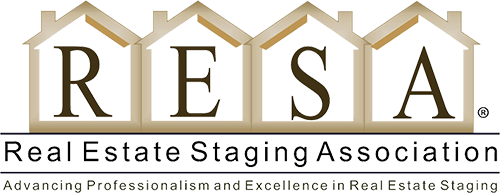Home staging is an effective marketing technique that homeowners, real estate developers, and realtors use to sell properties faster and for as much money as possible. Staging a home brings personality to the space and helps prospective buyers visualize themselves in the home.
There are two main types of home staging: virtual home staging and real home staging. Which is right for you? Both types of staging come with their own sets of advantages and drawbacks. If you’re new to home staging, it can be difficult to choose between virtual staging and real (traditional) staging.
In this article, we will provide a detailed comparison of virtual staging vs real staging to help you make an informed decision. We’ll discuss everything you need to know about both types of home staging and explore the pros and cons.
What Is Virtual Home Staging?
As the name implies, virtual home staging is done digitally by utilizing graphic design programs and special software to produce a virtual visualization of a space. The home stager digitally adds furniture and décor to a photo of a house to give the space the desired look and ambiance. With virtual staging, there is no physical furniture or décor brought into the space. Instead, the staging professional takes real photos of the vacant space and then digitally plugs imaginary furniture and décor into the space.
Advantages of Virtual Staging
- Cost
Virtual staging is a cost-effective option because you won’t need to add physical furniture, décor, and accessories to the space. This type of home staging dramatically cuts the expenses that come with real staging. On average, the cost of real staging may range from $750 to $2,800, compared to around $50 to $75 per photo of a virtually staged home.
- Quick turnaround
Unlike real staging, which can take several days to complete, a professional stager can complete virtual staging for an entire house in just a few hours, because there’s no need to add real furniture and décor items.
- Creative freedom
Virtual home staging gives you endless design, furniture, and layout options to choose from. The staging designer isn’t limited to the availability of furnishings and décor options. With their wide variety of design elements, they can create a space to suit a prospective client’s needs. For instance, if a design style doesn’t work for a specific room, you can quickly swap it out with something else.
Disadvantages of Virtual Staging
While virtual home staging has gained popularity over the years as a cost-effective way to sell your home faster and for top dollar, it has its fair share of downsides. Here are the most common downsides.
- Some markets do not allow virtual staging.
- In-person viewing isn’t possible.
- Virtual staging can conceal flaws and manipulate prospective buyers.
- It can be difficult to provide an accurate representation of the property with virtual staging.
What Is Real (Traditional) Home Staging?
Real staging, also known as physical staging, involves calling in a home staging professional to stage a home for sale. In other words, it is a type of staging that is done in person. A professional stager will come with real furniture, décor items, storage units for decluttering, and all the items necessary to highlight the house’s best features. After the initial consultation, the home staging professional will come up with an accurate estimate for the project and create a design plan to highlight the most appealing and valuable features of the home.
Advantages of Real Staging
- Provides the In-Person Experience
Although virtual staging is cheaper, real home staging provides prospective buyers with a real-life experience. The buyers can visit the property, walk around the property, and visualize how life could be in the home. Unlike looking at photos, in-person viewing helps prospective buyers to develop an emotional connection to the property, thereby increasing the chances of selling it for a higher price.
- Real Staging Is Much More Familiar To Prospective Buyers
Real estate statistics indicate that the majority of home buyers prefer physically staged homes as it enables them to truly take in the details of a home. This makes real staging an excellent option for sellers targeting buyers who prefer physically staged properties.
Disadvantages of Real Staging
- It’s much more expensive than virtual staging.
- Your creative freedom is limited.
- It takes a lot of time and effort.
- You may need to make some renovations and facelifts.
- The staged space has to be cleaned and maintained, which can add to the staging costs.
Final Thoughts
Virtual staging is a cost-effective option, while real staging offers the real-life experience that most prospective buyers look for. Your choice between real home staging and virtual home staging will depend on your budget, desired turnaround, availability of furnishings, target market, and other unique circumstances. Whether you choose real staging or virtual staging, it’s best to work with an experienced and reputable home staging professional.







